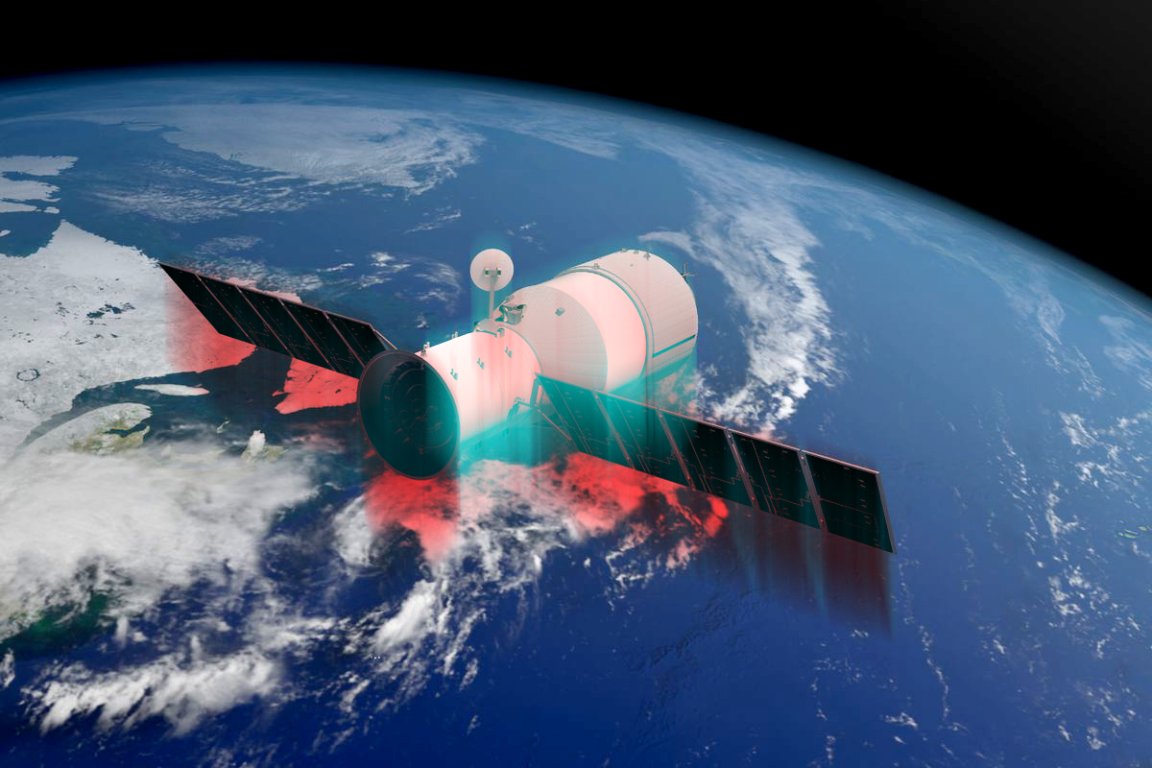
If a massive space station falls out of the atmosphere into the Pacific Ocean, with no one there to witness it, does it make a sound?
That’s no hypothetical question. We’re asking about Tiangong-1, the Chinese space station that finally “de-orbited” from space and into the Pacific around 8 PM Eastern time on April 1.
Let’s be honest — “de-orbited” is a polite way of saying “free-fall.” Scientists could neither alter nor even really track Tiangong-1’s descent. That could be a problem in a future — an atmosphere more packed with spacecraft presents a (slightly) higher risk for humans on the ground.
We’ve anticipated Tiangong-1’s homecoming since 2016, when abnormalities in the space station’s orbit suggested that the Chinese space agency had lost control of it. It took a few months for authorities to admit that the craft was out of their reach. Normally, a space agency will retire a satellite by purposely guiding it into the atmosphere, at an angle and speed such that it burns up completely or re-enters Earth’s atmosphere far from human populations.
That makes Tiangong-1’s spinning, erratic descent less than ideal.
Scientists weren’t exactly sure when and where the craft would land until the moment it did so. Indeed, the space station’s case highlights the fact that scientists still don’t have the necessary technology or research to wrangle the significant number of variables that factor into tracking and modeling such situations.
Around noon Eastern time on April 1, eight hours before the craft actually crashed, the European Space Agency (ESA) had reached the limit of what it could forecast. And there still a pretty big window for when and where the station would re-enter.
“With our current understanding of the dynamics of the upper atmosphere and Europe’s limited sensors, we are not able to make very precise predictions,” said Holger Krag, head of ESA’s Space Debris Office, in an agency blog about Tiangong-1.
Note: we do not want to overstate the odds of being hit by falling spacecraft. Space junk falls out of the atmosphere all the time, and only one person has ever been hit by it. For the Tiangong-1, the odds that the falling space station would have hit any single human on Earth were still 1 in 1 trillion, lower than your yearly odds of being struck by lightning.
But that may change in the coming years. The growing space industry has promised to put a number of new spacecraft into orbit around Earth in the next decade, including thousands of new satellites. As we increase the number of objects in space, the overall probability of something falling out of the sky into a populated area will increase. At the moment, nobody has a way to zap space junk (or incoming meteors, for that matter) that might pose a threat, and it doesn’t seem likely that we’ll get one anytime soon.
Instead, as ESA’s Krag implies, research could help a lot. If we could better understand how the upper atmosphere behaves, we could better model where a falling object would land, and potentially warn people in the area if needed.
Unfortunately, that doesn’t seem likely. The sort of basic research that would improve scientists’ understanding of the atmosphere is chronically under-funded, and in the U.S., happens in agencies to which the White House doesn’t allocate many resources.
Basic research into the upper atmosphere isn’t nearly as sexy as as falling space junk, but it could one day save a lot of people some logistical — and potentially physical — headaches.